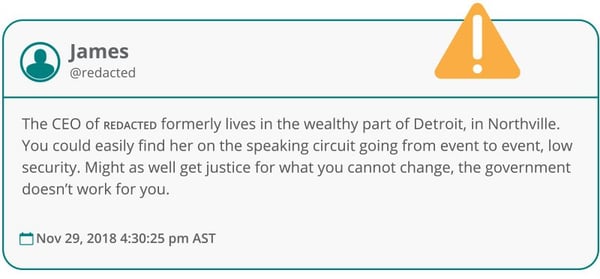Benefits of a Protective Intelligence Program
The requirements to safeguard the world’s wealthy, prominent, and powerful have become more complex.
Practitioners today must understand an increasingly diverse attack surface when implementing any close protection strategy. And in addition to physical safety, clients now expect security teams to safeguard their online reputation and private information.
Staffing shortages for qualified security professionals have only compounded these challenges. As the baby boomer generation begins to retire, thousands of experienced protectors plan to leave the industry over the next few years. That will leave those that remain with unfilled positions, heavier workloads, and burned-out employees.
So to address these challenges, agencies have invested financial resources in developing protective intelligence programs to support their daily operations. This investment has numerous payoffs, such as:
- Mitigate risks: Advanced warning of a potential threat derived from a protective intelligence program can put practitioners in a position to prevent incidents before they even occur.
- Identify vulnerabilities: Red team analysis conducted by PI analysts can assess a client’s vulnerabilities and help protectors develop appropriate mitigation strategies.
- Reduce response times: Monitoring open source data can alert security teams to incidents almost as soon as they happen, saving precious minutes or seconds when they count the most.
- Improve resource allocation: Proactively identifying threats allow protection teams to better allocate resources and stretch limited budgets.
5 Ways Protective Intelligence Programs Supports Operations
Protective intelligence can support operations in several ways. Still, most security teams don’t exploit the practice to its full potential. And many practitioners fail to consider a potential use case until after an incident occurs.
So how can organizations fully exploit the value of a protective intelligence program? Let’s take a look at some examples.
- Physical Threats: High-profile individuals may be targeted by extremists because of their actions, religion, ethnicity, or political views. For this reason, detecting physical threats represents a top priority for most security teams. Information collected through protective intelligence allows practitioners to identify a person of interest and evaluate their potential risk to a client. Protectors also gain improved situational awareness near key locations, such as a principal’s home, office, event facility, or travel route.
- Reputation-Damaging Content: A well-organized disinformation campaign can inflict enormous damage on a principal’s reputation. Alternatively, bad actors may exploit an executive's or celebrity's image to promote a criminal scam. Protective intelligence tools can allow practitioners to respond to such attacks before content goes viral online. And an early heads-up can provide a client’s communications team with valuable time to plot their public relations strategy.
- Travel Logistics and Security: Security teams use protective intelligence programs to evaluate the political climate in destinations, assessing important aspects of travel security such as crime, social unrest, or dangerous weather. In recent years, the COVID pandemic has also complicated once routine tasks like acquiring visas, crossing borders, and other logistics. Collecting intelligence from local news and media outlets can provide key insights into travel restrictions overseas.
- New Adversary Tactics: From ransomware to flash mobs, adversaries are always inventing new strategies to exploit their victims. But by monitoring criminal communities on the deep and dark web, executive protection teams can keep tabs on emerging tactics. And by extension, they can adapt their protection strategy accordingly.
- Cyber Vulnerabilities: Vulnerabilities in cyberspace increasingly have real-world implications for a client’s physical security. Younger, digitally native family members, for instance, could leak confidential information or reveal the location of the principal. Adversaries could publish personally identifying information, such as addresses, account passwords, passport details, bank records, medical information, or social insurance numbers, to humiliate or intimidate victims. Protective intelligence allows security teams to respond to such situations in a quick and timely manner. Or at the very least, be aware that such information is available freely online.
Final Thoughts
The executive protection industry will continue to be plagued by talent shortages and resource constraints in the coming years. And as the profession grows and develops, clients will demand ever-better service. No longer can the professional protector rely on their intuitions and informal processes. What one person can do successfully on instinct cannot necessarily be replicated by an entire team.
Instead, practitioners must adopt the intelligence analyst mindset. As keeping the world’s wealthy and powerful safe becomes more complex, this approach will prove essential. And for resource-strapped protection teams, adopting a protective intelligence program represents the ultimate force multiplier.


